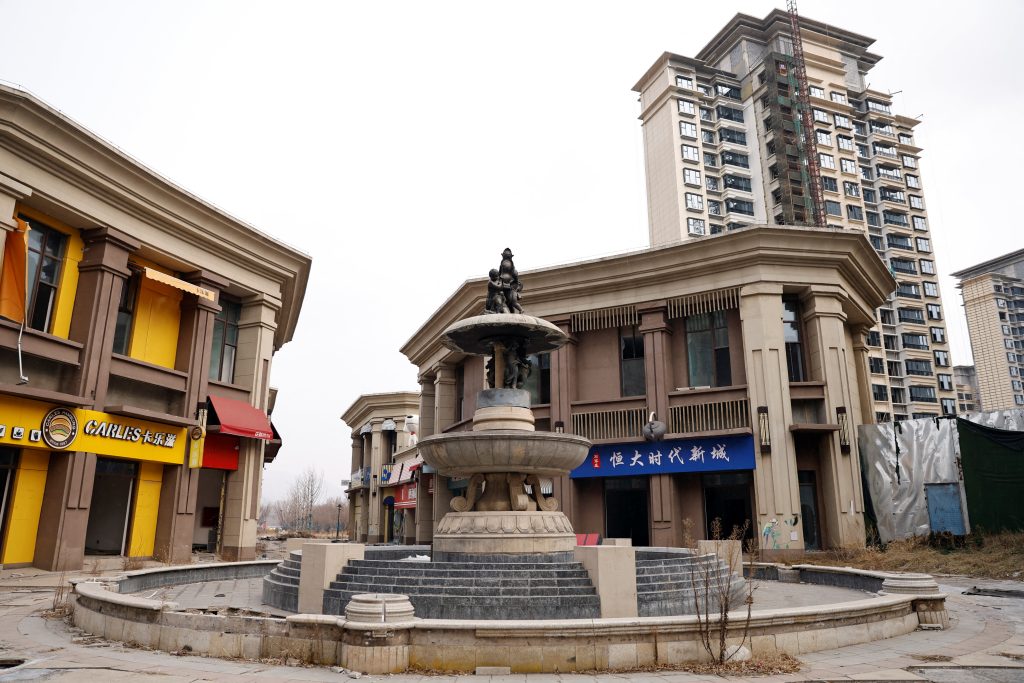The word to describe China’s economy in 2023 is bumpy. After an expectations-exceeding growth of 4.5 per cent in the first quarter of 2023 following three years of strict COVID-19 prevention policies, China’s GDP grew short of the market expectations by 6.3 per cent in the second quarter. Despite pessimism, GDP growth for the third quarter reached 4.9 per cent, beating expectations once again. The fourth quarter saw 5.2 per cent GDP growth, which also marked the annual growth rate for China in 2023.
China’s high-tech industry and service sectors showed resilience. Strong growth in high-tech industries can be attributed in part to continuous support from the Chinese government. Beijing has recognised the potential of high-tech firms to drive economic growth and innovation and this support is expected to continue.
In 2023, the services sector gained significant momentum, driven by increased consumer and business demand as China removed COVID-19 restrictions. The services sector contributed 5.8 per cent to national economic growth, outperforming agricultural and industrial production.
Despite these robust economic performances, China’s economy faces significant challenges including declining property investment, accumulating debt risk and weak consumption growth, all of which pose downside risks to China’s growth trajectory in the near term.
The contraction in the property market is not new. It stems from a series of policy crackdowns that started in late 2020, notably the ‘Three Red Lines’ policy designed to mitigate substantial risks among the many property developers with mounting debt. Beijing has since repeatedly emphasised that housing is for living in, not for speculation, reaffirming its determination to control risks in the housing market.
Despite the continuing decline in residential investment, the real estate sector showed signs of recovery in 2023 thanks to more conducive policies. In January 2023 the government announced a 21-point plan to improve the balance sheets of high-quality property developers. Beijing also eased mortgage policies and relaxed requirements for first home buyers to boost buyer confidence. Rapid property market expansion might be gone, but a smaller market with better developers and closer government oversight is likely the future.
Local governments in China have been grappling with high levels of debt, posing another potential catalyst for a debt crisis. The debt distress was particularly concerning in 2023 due to slower-than-expected economic recovery in some regions and a prolonged downturn in the property market. In some provinces, these two factors hampered their governments’ ability to service their debts.
Beijing’s concern led to the reform of the local financial regulatory framework in March 2023. The government has also initiated a gradual restructuring of local government debt. This includes rolling over existing debts, extending loan terms at lower interest rates and issuing special-purpose bonds to fund large infrastructure projects. Beijing must strike a balance between preventing crises and establishing a sustainable path for local government budgets.
China’s weak consumption growth is as much a cyclical issue as a structural one. Historically, China’s household consumption-to-GDP ratio has been lower than in other comparable countries, standing at 56 per cent compared to 66 per cent in India and 67 per cent in Thailand, whereas the average consumption-to-GDP ratio in most advanced economies is around 80 per cent. This is partly due to the catch-up policy that China has adopted since its reforms in the 1980s. This strategy aims to develop the economy by using household savings to subsidise entrepreneurs, suppressing consumption.
The COVID-19 pandemic exacerbated the situation by damaging many households’ balance sheets due to declining incomes and a lack of financial support. Youth unemployment also surged. Despite increases in retail sales and services, the recovery of consumption of durable goods and big-ticket items remained sluggish in 2023. Chinese households appear hesitant to spend and lack confidence in the market outlook.
The government recognised the challenging financial situation and proactively implemented a series of fiscal and monetary policies. But those policies primarily targeted businesses rather than households. The reason for this disparity is China’s inadequate social security network, which prevents the central government from directly extending relief to households. Long-term structural reforms are needed to address this issue.
On 11–12 December 2023 China held its annual Central Economic Work Conference in Beijing. The meeting reiterated the importance of growth and development — but this time backed by innovation and sustainability. The conference continued to underscore the pressures of insufficient demand and weak social expectations while identifying new issues such as excess capacity in some industries, hidden risks, choke points in the domestic macroeconomic cycle and increased uncertainty in the external environment.
The 2023 conference placed stabilising expectations ahead of stabilising growth and employment in its official statement. This indicates the growing challenge of addressing prolonged weaknesses in household confidence. The conference also continued to emphasise key risk areas including real estate, local government debt and small and medium financial institutions.
The conference proposed establishing a new development model for property developers, with 2024 likely to be the year when the framework of this new model is formalised. As for local government debts, Beijing called on major provinces to contribute to the overall debt restructuring effort.
China is facing increasingly difficult challenges. It has correctly identified the domestic market as the main driver of growth, while accepting that the external environment is too volatile to be counted on. China’s structural challenges — its paltry social security system, rigid household registration system, ageing population and rising labour costs — cannot be swiftly resolved. Three years of strict COVID-19 controls prevented unimaginable health and economic disaster but disrupted China’s long-run growth trajectory.
Jiao Wang is Research Fellow at the Melbourne Institute of Applied Economic & Social Research, University of Melbourne.
This article is part of an EAF special feature series on 2023 in review and the year ahead.

